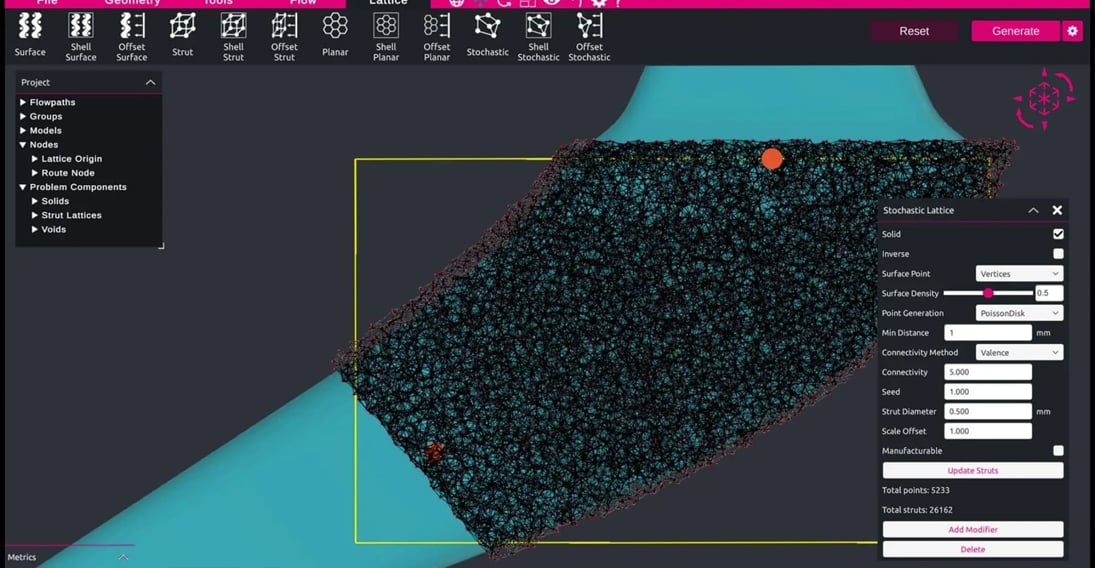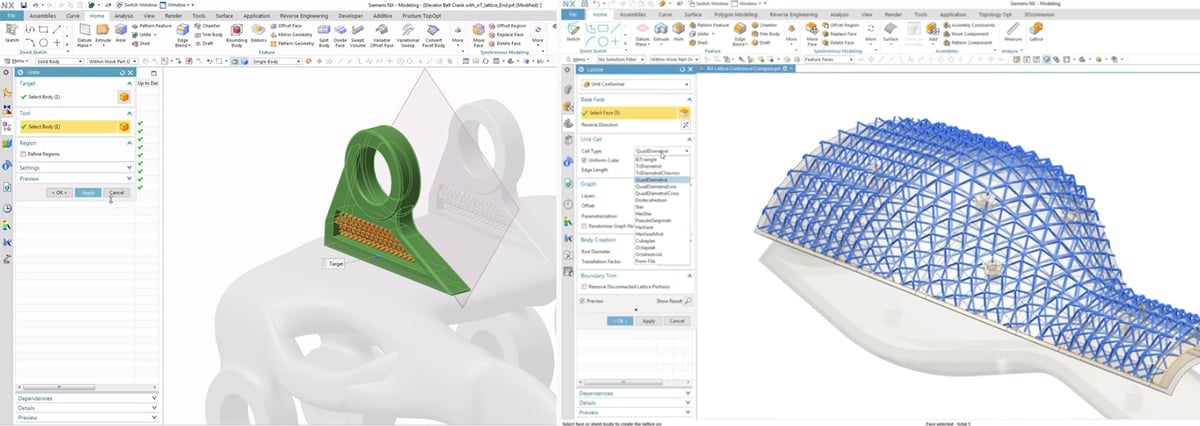Lattice structures in 3D printing are a powerful design tool. Well-designed lattices can make parts lighter and stronger, absorb impact more efficiently, and be better customized to their end-use. Understanding how to use and create these structures is an essential part of product engineering and industrial design in 3D printing for prototypes and production parts.
Although you may be familiar with infills, which are a specific application of lattice structures, most non-specialist designers underutilize latticing. But here, you’ll learn that it’s not that difficult to apply if you become familiar with the essentials we cover below. Plus, today’s advanced design software for additive manufacturing goes a long way in auto-generating various lattices for applications ranging from sports equipment to rocket thrusters to medical implants.

First, we’ll give you a thorough introduction to the essentials of designing parts using lattice structures, including everything that is needed to start using this approach straight away. Then, we’ll cover the different types of lattices, how to use them and when, and show you how designers and engineers around the world use latticing to create extremely high-performing and innovative products, from Adidas running shoes and Specialized bike saddles to industrial heat sinks and orthopedic knee implants. Lastly, we cover the top software you’ll need to apply lattice structures to your designs.
Essential 1. Why Use Lattice Structures
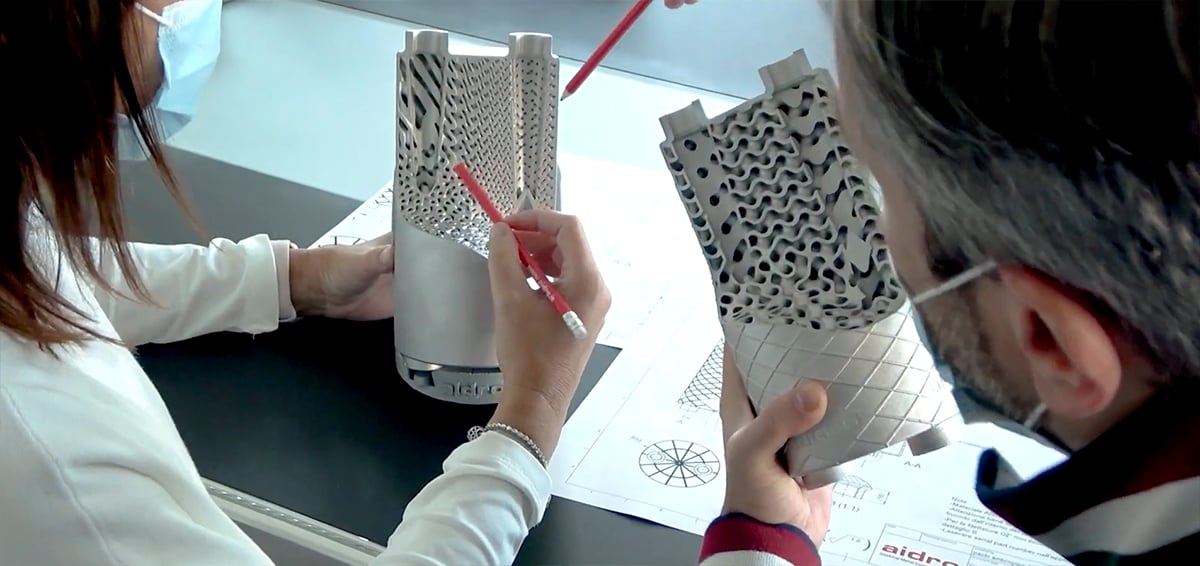
Lattices have some unique properties that can be extremely useful when designing a part or product, which are near impossible to replicate with conventional manufacturing methods. You can use lattice structures with any type of 3D printing and nearly any material.
Reduced Material Use
Using a lattice in your design can drastically reduce the amount of material that is used by removing most of the material in non-critical areas. If your part is being manufactured using powder or resin-based 3D printing processes, this can result in a big cost saving.
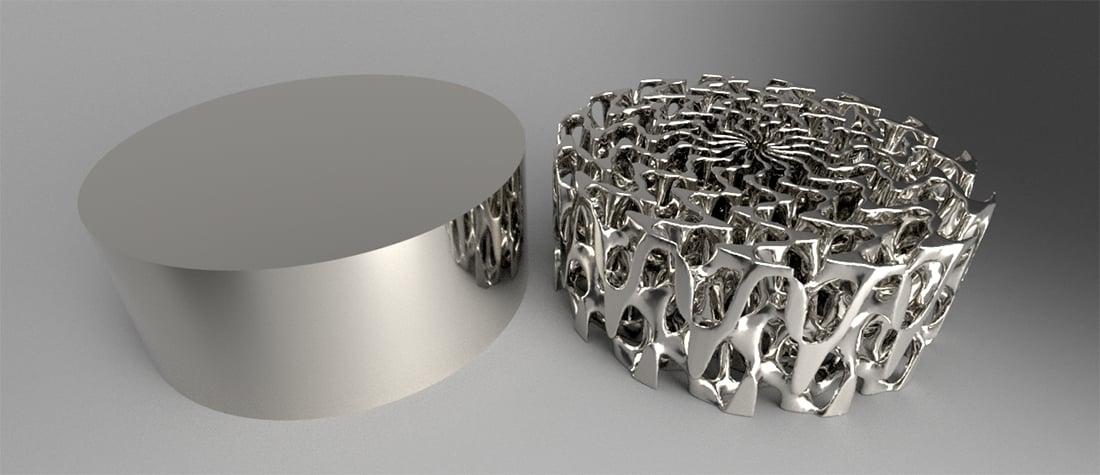
Lightweighting
That reduced material use has another benefit also – weight savings. In many applications, the final assembled mass of your part or assembly is a tightly constrained objective, and lighter is usually better. Depending on the lattice type chosen, weight savings can be very significant, and this has many advantages, from reduced fuel use in automotive applications to improved patient recovery time in medical cases.
Energy Absorption
Lattice structures have many properties that are advantageous for absorbing energy. By varying the density and even cell type in different areas, a design can be made to absorb energy effectively in different directions. Compared to standard foam used in a wide range of products, complex lattice structures can redirect and better distribute energy in multiple directions to absorb impact forces, all while taking advantage of the various properties of modern additive manufacturing resins.
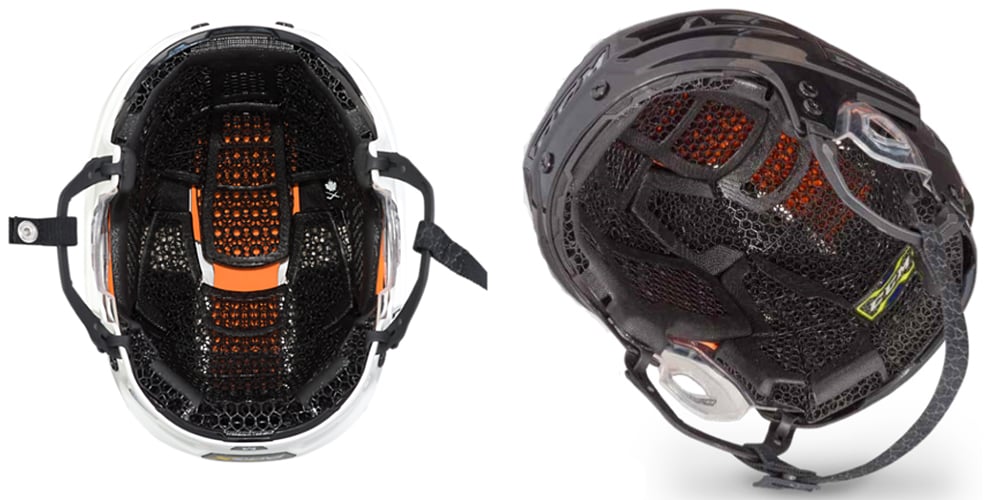
Increased Surface Area
The surface area of a lattice is many times greater than that of a solid component of the same size. This can be hugely useful for applications involving heat exchange or chemical catalysis that rely on high surface areas to achieve their function.
Aesthetics
Aside from the many technical advantages of lattices, it is hard to ignore that they have a unique and beautiful aesthetic. Increasingly, product designers are choosing to incorporate latticed elements into consumer product designs for no other reason than looks.
Essential 2. Lattice Structure Types
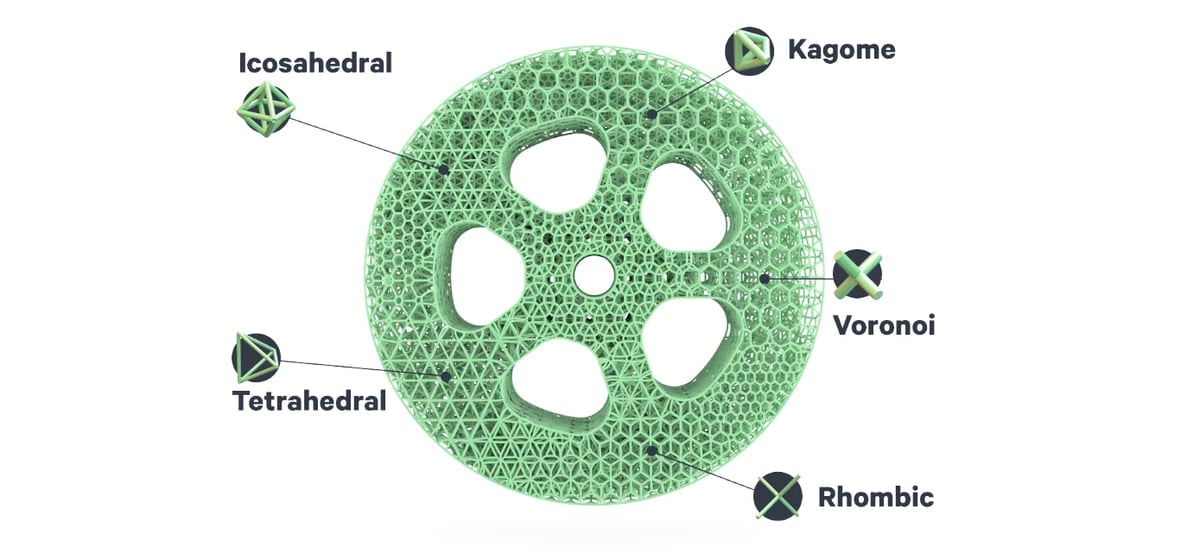
Generally, lattice types are grouped into categories based on their properties. Entire research papers have been written to define the many different sub-types, but the basics of what makes one lattice different from another isn’t too hard to understand.
All lattices are based upon a unit cell. This is the repeating unit that is copied repeatedly in multiple directions to make the structure as a whole. Below are the lattice types by cell type.
TPMS Lattices
Triply periodic minimal surface (TPMS) lattices are created when a trigonometric equation is used to generate the unit cell. The ‘gyroid’ TPMS cell, for example, is made up of all the points inside the cell for which the following equation holds true:
- sin(x)cos(y) + sin(y)cos(z) + sin(z)cos(x)=0
Different but similar equations like this produce the different TPMS lattice types.
Strut Lattices
Strut lattices (or beam lattices) are made up of interconnected beams, joined in various patterns as defined by the unit cell. The struts can be joined by the vertices of the cubic cell, the edges, and the faces, and different combinations of these connection points produce the different types.
Planar Lattices
Planar lattices are the simplest type of lattice and are created when a 2D unit cell is extruded in 3D. The most common type of planar lattice is a honeycomb structure.
Each of these types of lattices can also be made from a periodic lattice into a stochastic lattice by varying its parameters randomly in different directions. This can have advantages in some applications by giving the structure similar properties in every direction (making it isotropic).
When it comes to your lattice-generating software, you may be confronted with the lattice types:
- Icosahedral: an irregular lattice characterized by the arrangement of points in space.
- Tetrahedral: a lattice based on a tetrahedron, which has four triangular faces. Every vertex is connected to three neighboring vertices by edges.
- Rhombic: a lattice where the unit cells are rhombi (a four-sided shape of equal length), and they are connected to neighboring unit cells at their vertices or edges.
- Voronoi: a lattice where space is divided into cells based on the proximity to a set of seed points.
- Kagome: a lattice structure that consists of a repeating pattern of triangular units
Essential 3. Applying Lattice Structures in Real Products
Many different industries take advantage of the properties of lattice structures when designing new products, and recent years have seen an influx of new applications and ideas with lattice structures as a key feature. A few of the most exciting and innovative ones are featured below.
Automotive
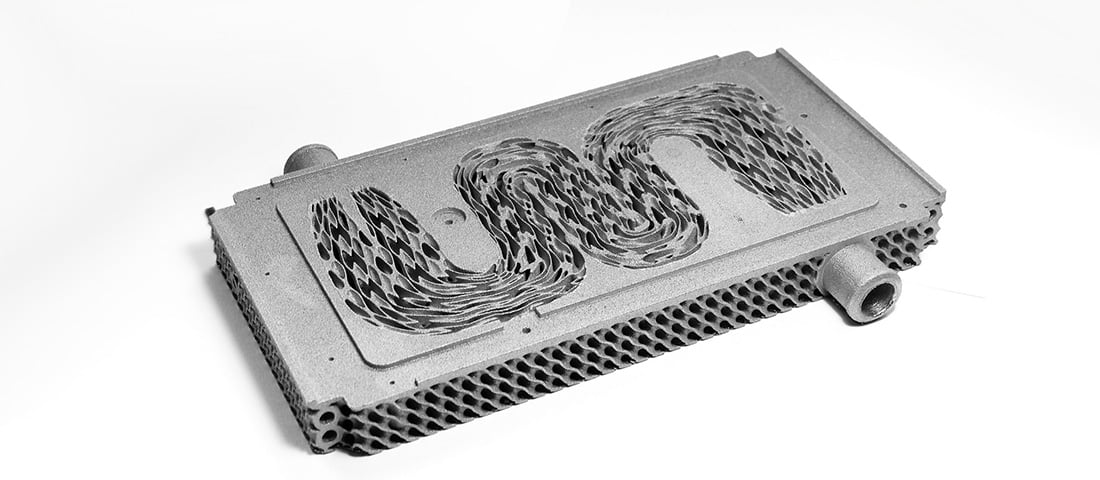
Italian product development agency Puntozero partnered with Formula SAE team Dynamis PRC to design this unusual cold plate (above) for their high-voltage converter. Based on a warped version of the gyroid unit cell, the plate was 25% lighter and had a 300% greater surface area than the previous design. Designed with nTop software.
Medical
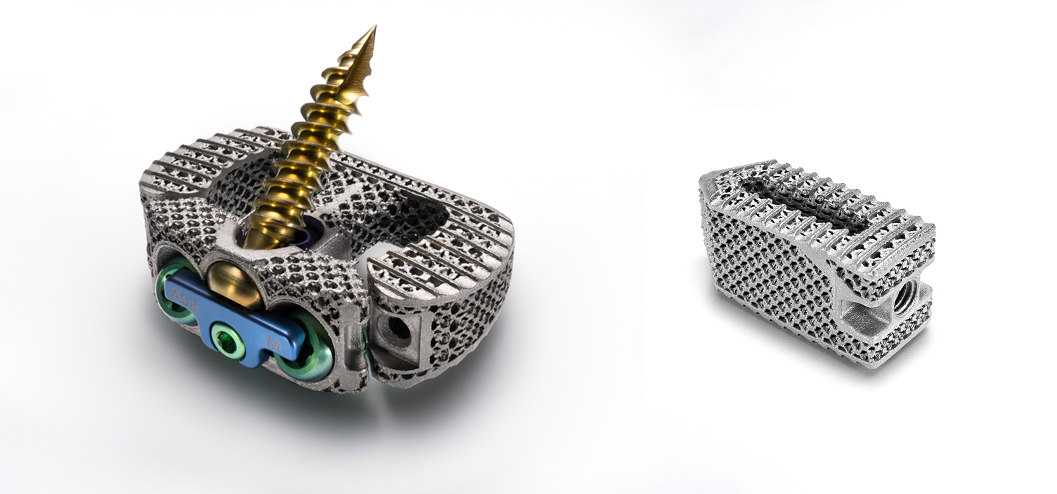
NanoHive Medical is a US company that specializes in the design of unique spinal implants used during surgery to treat degenerative spine conditions. In this case, the lattice design is used to reduce the stiffness of the implant, allowing forces to be transmitted more into the spine itself and therefore reducing bone atrophy around the titanium implant.
Lattice structures in knee and hip implants have been shown to increase bone growth into the implant, called osteointegration. A recent study in the journal Bone & Joint Research found that 3D printed “titanium lattice implants maintained the natural mechanical loading in the proximal tibia after [a partial or total knee replacement], but conventional solid implants did not.”
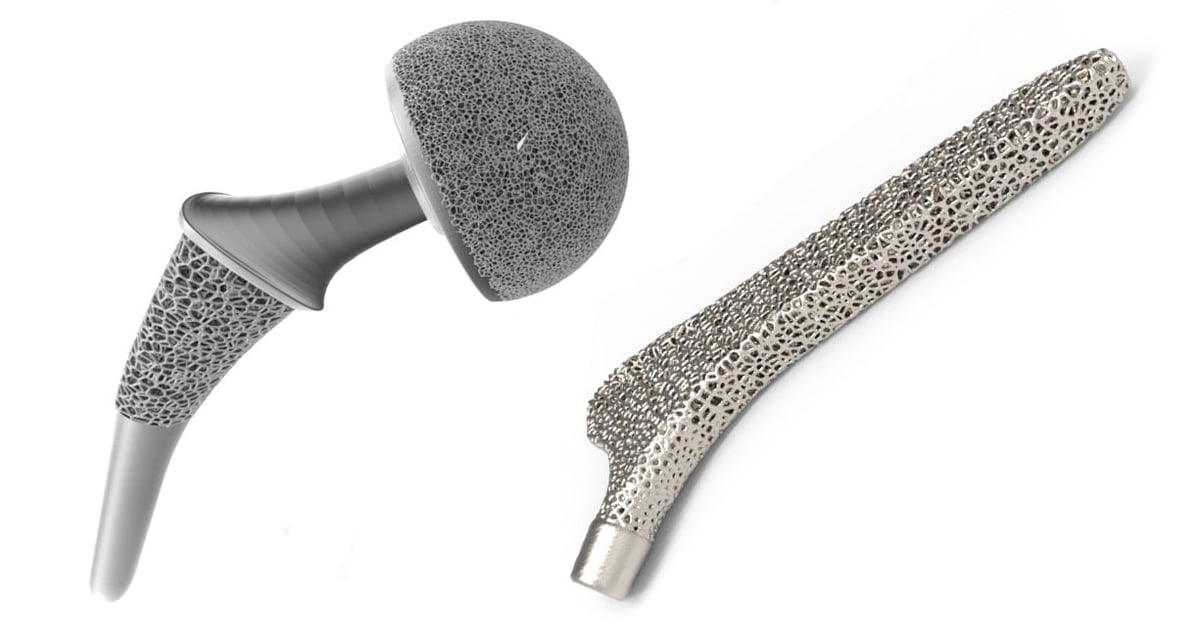
Like a sponge, the lattice-like structure in medical implants is not perfectly uniform. The types of lumpy structures that we commonly use to create this bone structure are called trabecular lattices or stochastic lattices. These lattices mimic the bone type called trabecular bone and at a basic level are essentially randomized foam.
Specialized computer-aided design (CAD) software enables implant engineers to apply this type of surface structure to metal implants.
Sports Equipment

Since the launch of the Specialized lattice bike saddle in 2019, the concept has taken off. Several cycling equipment manufacturers have introduced their own versions of saddles that ditch the foam padding and opt for lattice structures instead. This advancement produces variable support by 3D printing different lattice shapes and sizes in different zones. Manufacturers boast how durable these saddles are as well as providing ventilation and being easy to clean. The Posedia Joyseat (above, right) is custom-made and custom-fit for each rider after they submit photos and a “Smiling Butt Kit”, which is a specially developed foam block that you sit on to create a custom impression of your sit bone width and weigh distribution.
Helmets are another ideal application opportunity for lightweight and impact-absorbing lattice structures, often called “digital foam”. They’ve been applied to NFL football helmets, NHL hockey helmets, Olympic bobsledding helmets, and cycling helmets using a variety of approaches and materials. In fact, the NFL’s 2023 Helmet Laboratory Testing Performance Results ranked and rated a range of helmets on the market and placed the two with 3D printed lattice structures in first and second place.

Exemplifying two different approaches to lattice structures in headgear are Riddell’s football helmet and Hexr’s cycling helmet. Although both are designed to absorb impact and protect the user as effectively as possible, but the differences lie in the manufacturing method and lattice type, as well as just the sport. The Hexr helmet uses a mostly planar hexagon lattice structure, produced using SLS printing and made using a stiff Nylon 6 material. The Carbon Riddell helmet, on the other hand, uses a highly damping DLP elastomer and a complex multizone lattice made from more than 140,000 individual struts. The process relies on Riddell’s Precision-fit head scanning technology and Carbon Lattice Engine to design a helmet liner customized to each player’s head and position.
To streamline the R&D process of matching material, lattice shape, and application, especially for helmets, the US Army Development Command Soldier Center tasked start-up software company General Lattice with developing a predictive modeling toolset to design and generate lattice materials based on real-world data. The toolset, built on more than 10 million physical data points, is a searchable database that allows users to query lattice materials based on mechanical properties. “Providing tools that enable users to understand the impact potential of lattice structure up-front reduces the risk of adoption and builds confidence that 3D printing can deliver as advertised.,” says General Lattice’s co-founder Nick Florek.
Although the Army is holding on to its toolset, General Lattice has a public version called Frontier that provides a free-to-search library of validated mechanical property data to support users in the selection of the best lattice, material, and hardware combination.
Heat Exchangers

Additive manufacturing enables geometries not possible with any other type of manufacturing, making smaller and more efficient heat exchangers possible.
This complex heat exchanger above, designed by GE to optimize the flow of 900°C carbon dioxide, is an excellent example of the remarkable properties that can be achieved when complex lattice structures are combined with metal additive manufacturing. GE took a biomimicry approach to their design, mirroring the properties of human lungs to facilitate effective heat exchange.
Companies such as Conflux, specialize specifically in designing 3D printed heat exchangers using lattices for a wide range of industries.
Consumer Products

Adidas Athletic Footwear, in collaboration with Carbon 3D, launched 4DFWD shoe in 2017 – the latest in a series of sport shoes made using DLP resin technology. The shoes prominently feature a lattice structure in the midsole, designed to propel runners forward using their custom FWD unit cell.
Essential 4. Limitations of Lattice Structures
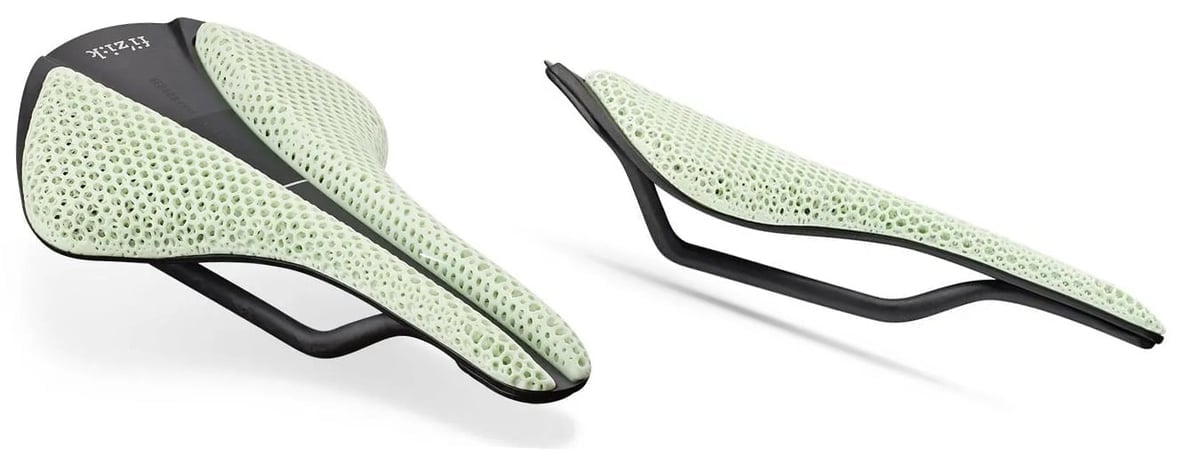
Despite being a powerful and underutilized feature, lattice structures do have some limitations that need to be considered by engineers and designers who are serious about using them in real-world products.
Manufacturing
Although traditional methods for manufacturing complex non-planar lattice structures do exist, by and large they are less effective than additive methods. As such, the economics, timescales, and material choices unique to additive manufacturing should be carefully considered when incorporating a lattice into a design, especially if other areas have been designed with other techniques such as injection molding in mind.
Simulation
Stress simulations, especially those using a finite element approach, can be very computationally intensive when large lattice structures are involved. Most approaches (including those used by several of the software packages mentioned above) involve extrapolating the properties of the unit cell across the entire structure, but if the cell types and sizes vary significantly, then physical testing may be the only way to accurately evaluate the performance of very large and complex lattice designs.
File Sizes
Similarly, when part designs that feature large lattice sections are converted to STL (which is still the most common file type used in AM for better or worse) file sizes in excess of 500MB or even 1GB are common. This will often mean that further processing and slicing can be a slow and difficult process with all but the most powerful computers. Reducing the size of the mesh is possible of course, but this can simplify the elements so much that some triangular elements are visible on the final part if not done carefully.
Limited Cell Types
The type of unit cell is one of the most important features of a lattice structure, and is responsible for most of the different properties that the structure as a whole will possess, but there is a limited choice of options easily available to most engineers and designers. Some software packages allow the design and creation of new types, but even with access to these programs, this is a highly specialized and technical task to approach.
Essential 5. The Best Software to Generate Lattice Structures
Lattice-generating software and lattice features in the CAD software you may already be using are the only way to create these structures. In contrast to the various slicing engines commonly available for FDM printing, these software programs can be used to create lattices for multiple purposes, rather than just as a material infill, and typically aren’t used to generate G-code directly.
There’s a wide range of sophistications and features among the software options so be sure to test drive. Some of the best and most exciting options are listed below:
nTop
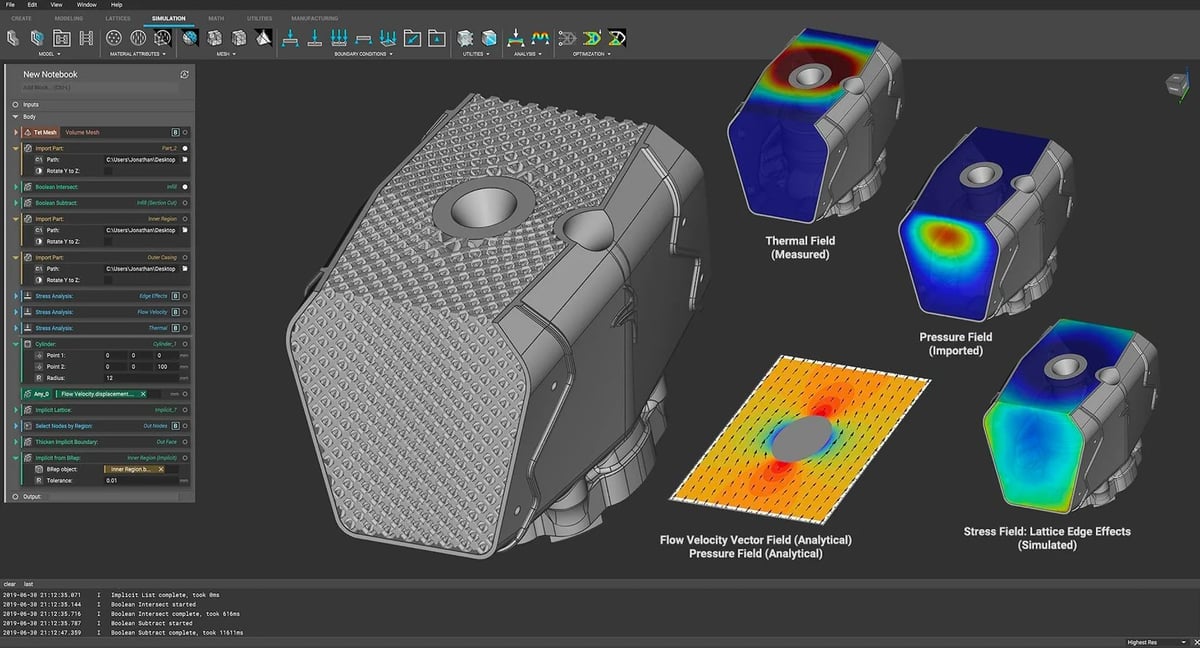
nTop offers a deep variety of lattice options and features that make it faster than a lot of CAD programs. Because the software is based on implicit modeling, where 3D geometry is defined as a mathematical function, not as external surfaces and edges, engineers can quickly generate complex structures – like lattices – while providing the reliability needed to feed automated design loops.
The latticing features included with nTop are extremely powerful and offer almost complete control over every aspect of the lattice structure, including the ability to define your own unit cell. Field-based design is a tricky concept to become familiar with for established CAD users, but once the learning curve has been overcome, the possibilities that can be designed using the suite are endless.
nTop features what the company calls GPU acceleration to make real-time visualization of lattice structures fast. The software enables you to preview design changes and rebuild even highly complex lattices in seconds. You can also adjust the lattice perimeters at every point in space and save your preferences in a reusable workflow.
If you’re new to lattices, nTop comes with an intro to lattices course, and the folks at nTop have posted a bevy of videos.
Altair Sulis
Last year, CAD software giant Altair bought a small UK company that had developed a powerful lattice tool called Sulis. It is now one of the company’s three latticing offerings, but stands out as the company’s most focused lattice tools. Sulis is used to create complex lattice structures and fluid flow channels for use across a range of industries, including aerospace, automotive, medical, and industrial machinery. It’s a 3D printing design software tool featuring an implicit modeling kernel tailored specifically to latticing and a one-click lattice creation feature, Sulis enables you to add lightweight structures to models and fine-tune their properties. You can create intricate geometry at any scale.
“Because Sulis is a CAD tool created specifically for AM, engineers can design parts that truly leverage the freedom of AM, unlocking the power of implicit geometry and reducing the risk of costly 3D printing failures,” the company says.
Key Features:
- Key Features
- One-click Lattice Creation
- Tailor the Properties of Lattice Structures
- Range of Unit Cell Types
- Real-time Visual Feedback on Flow Paths
- Easy Conformal Geometry
- Self-supporting Fluid Channels
Autodesk Fusion 360 & Netfabb
If you’re already an Autodesk user, you have had some lattice structure options available in Fusion 360 since Jan. 2022, but more extensive volumetric lattice generation was reserved for an extension. Since Sept. 2022, Autodesk expanded that lattice extension into what’s known as the Design Extention, which at $595 a year, more than doubles the price of the annual subscription to Fusion 360.
Still, latticing tools within the standard Fusion 360 are quite useful. You can vary the lattice’s cells gradually along a direction, and, unlike most programs that involve hollowing out a part and adding a lattice, Fusion360 lets its users design a part inside out. You can create a lattice and then form a skin over it, letting the lattice cell structure shrink as it nears the skin, producing a cell structure that effectively distributes local stresses from the surface to the internal lattice. This is what nature does routinely. Look at a section of the head of a femur for an example.
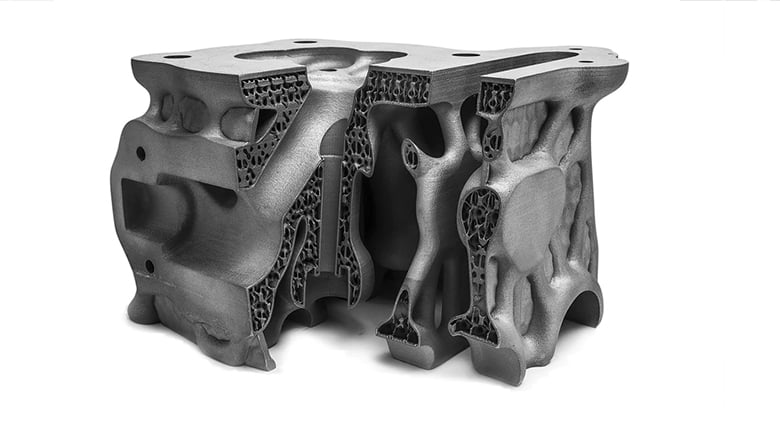
If you’re an Autodesk Netfabb user (Netfabb is bundled into your Fusion 360 subscription in two offerings), you may already be familiar with its robust lattice-generating ability. As seems to be common with the older software mentioned here, the GUI is again quite clunky, but Netfabb is nonetheless a powerful program that can produce very complex lattice designs. It also has a very convenient perforation feature to create holes in your part, allowing unused powder or resin to be removed easily. To get the more advanced latticing of Netfabb, you’ll need to subscribe to either Fusion 360 with Netfabb Premium, which includes hollowing and latticing, or Fusion 360 with Netfabb Ultimate, which includes more advanced optimized lattice tools.


Carbon Design Engine
Many of the images in this article are real-world lattice products from Carbon 3D. The hardware, materials, and software company’s latticing is in such demand they moved to make their lattice “engine” available outside of their ecosystem so you can use it with nearly any printer.
This cloud-based lattice design software creates robust conformal lattices in a range of cell types, but the type of really useful design functionality is only available with the more expensive ‘Pro’ version, which introduces transitions and gradients between lattice types.
The engine lets you precisely control performance characteristics across multiple zones in your product for massive tunability of a single material. This capability leverages different lattice cell types, cell sizes, or strut diameters to create different zones of performance. Design Engine uses patent-pending technology to seamlessly blend zones, producing attractive, functional lattices ready to use in real-world applications.
Ultrasim 3D Lattice Engine
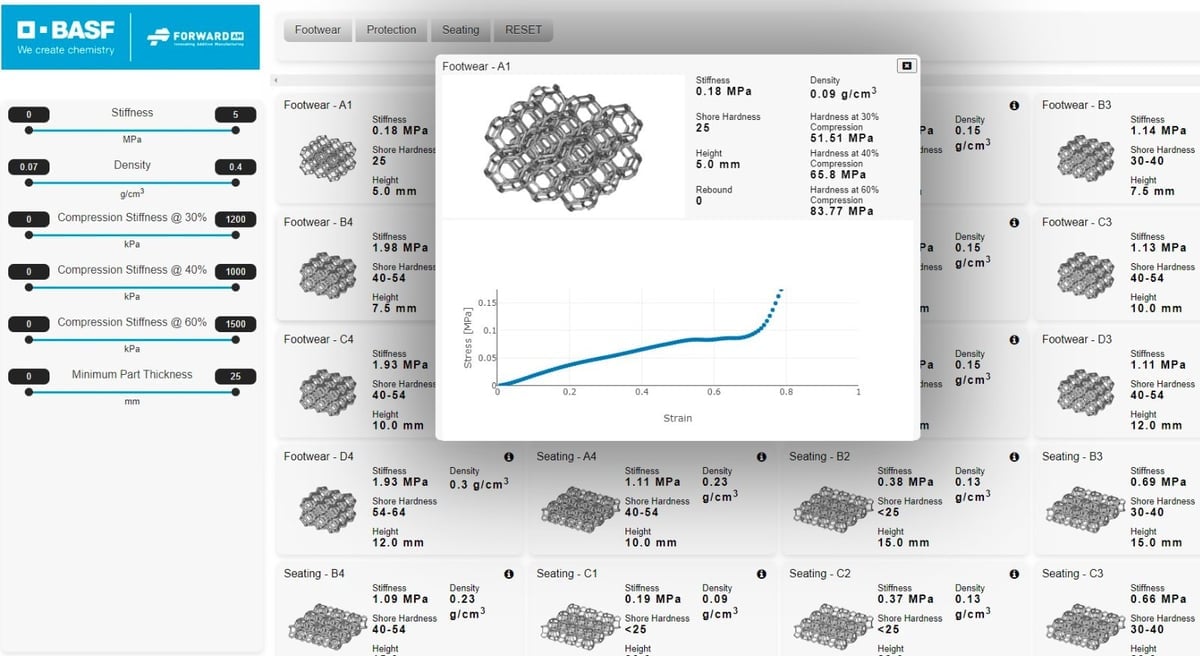
BASF Forward AM’s latest software solution, Ultrasim 3D Lattice Engine, aims to take the math out of lattices and make it easier to explore different lattice geometries and implement them into product design cycles faster with a click-and-apply approach. Powered by Hyperganic, the Munich-based algorithmic engineering software company, Ultrasim 3D Lattice Engine offers users a wide array of lattice patterns, each of which has been tested and validated for different application groups.
Whether you are designing a new footwear product or protective sporting equipment, there is a lattice geometry that meets the unique requirements of each application. Users can access an extensive lattice library in the form of physical test pads and a digital overview of mechanical properties. By inputting your desired application area, you can find lattice designs validated for similar use cases. From there, the software uses implicit modeling to automatically generate lattice parts that fit your design parameters and spits out an .stl or 3mf file for the lattice, which you can print and further validate.
Hyperganic builds software to design objects that are as complex, functional, elegant and sustainable as nature. Our algorithms generate parts, structures and entire machines through a process of digital evolution. Our technology enables output on advanced industrial 3D printers. Since 2015, we have been working with the leading companies, engineers, designers and scientists all over the world.
4.Software for design. BASF Forward AM will introduce the Ultrasim 3D Lattice Engine powered by Hyperganic, a software solution for iterating designs with lattice patterns — a tool for which there are many potential applications.
Siemens NX
In the 2022 release of NX from Siemens, lattice structures within NX can now be optimized using Siemens’ Simcenter 3D simulation to derive the optimal lattice structure in a singular environment. This eliminates the multiple design analysis steps required traditionally.
NX is a huge and complex piece of engineering software and you wouldn’t purchase it for the lattice capabilities alone, but it’s good to see Siemens expand the app’s latticing options.
Materialize 3-Matic
Materialize occupies a strong market position with its ubiquitous Magics software package for additive build preparation, and 3-Matic, used for additive design and data optimization, has been around since 2004. Although very commonly used by some larger companies and quite feature-rich, the latticing capability is difficult to use, in part due to its very dated GUI. If the generation of lattice structures is the primary feature needed, there are better and cheaper options available.
Altair Optistruct & Inspire
Although primarily a structural FEA solver, engineering analysis, and optimization tool, Optistruct deserves a mention due to its ability to produce a range of different lattice types using its design optimization feature-set. Altair’s approach to lattice structures is unusual in that it is intrinsically linked to topology optimization processes. The ability to accurately simulate lattices once they have been designed is extremely useful, but the package is probably only worth considering if the Optistruct solver is required for other purposes as well.
Another piece of software from Altair called Inspire, introduced unit cell lattice generation in 2020. Altair Inspire includes the ability to generate lightweight, unit-cell lattice structures for 3D printing that can be easily be edited, evaluating the structural performance of different design variants in moments.
In 2022, Altair acquired a software company focused on tools specifically for lattice generation and offers its solution called Sulis, which we cover above.
General Lattice
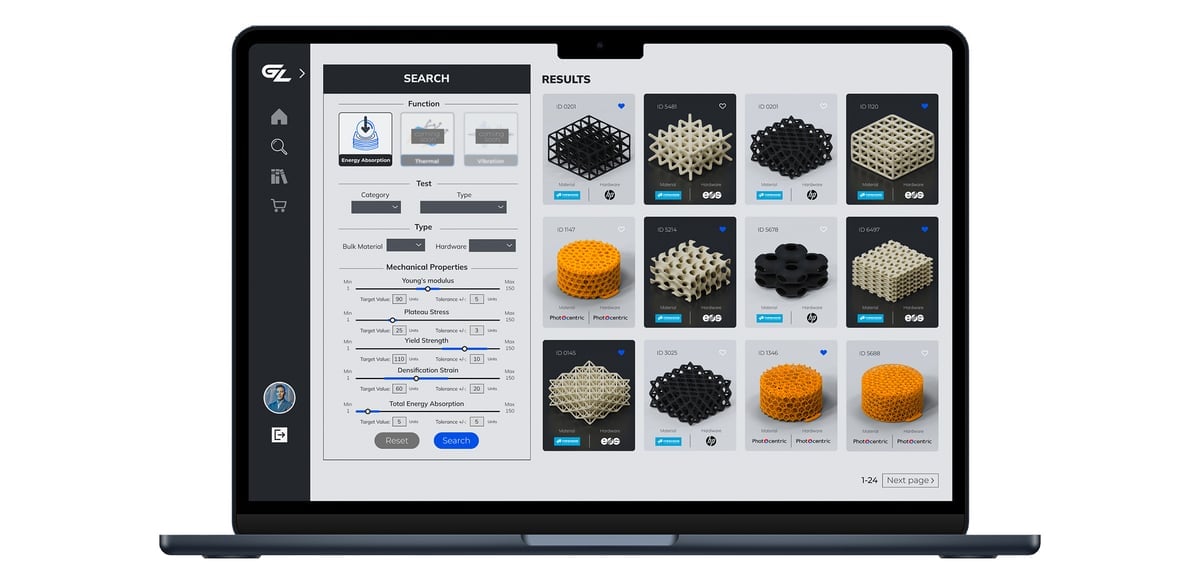
General Lattice’s Frontier software (currently still in beta) provides a searchable library of validated mechanical property data to support users in the selection of the best lattice, material, and hardware combination to meet a specific application. You can search, analyze, and order physical samples for hands-on evaluation, eliminating costly guess-and-check workflows.
Frontier says it finds the needle in the haystack of lattice designs so users don’t have to, saving time, money, and resources.
Gerard Shields is the Managing Director of Printpool Additive Manufacturing Ltd.
Gerard Shields is a Masters Degree qualified Mechanical Engineer, and worked in AM in both academia and industry before launching Printpool in 2020. Based in Oxford, UK, Gerard is a specialist in design for additive manufacturing and was honored to be recognized as one of the Manufacturer Top 100 and 50 Young People Making Manufacturing Smarter in 2021.
Lead image source: A rendering of the Riddell football helmet designed and printed by Carbon.
License: The text of "3D Printing Lattice Structures – The Ultimate Guide" by All3DP Pro is licensed under a Creative Commons Attribution 4.0 International License.
CERTAIN CONTENT THAT APPEARS ON THIS SITE COMES FROM AMAZON. THIS CONTENT IS PROVIDED ‘AS IS’ AND IS SUBJECT TO CHANGE OR REMOVAL AT ANY TIME.


